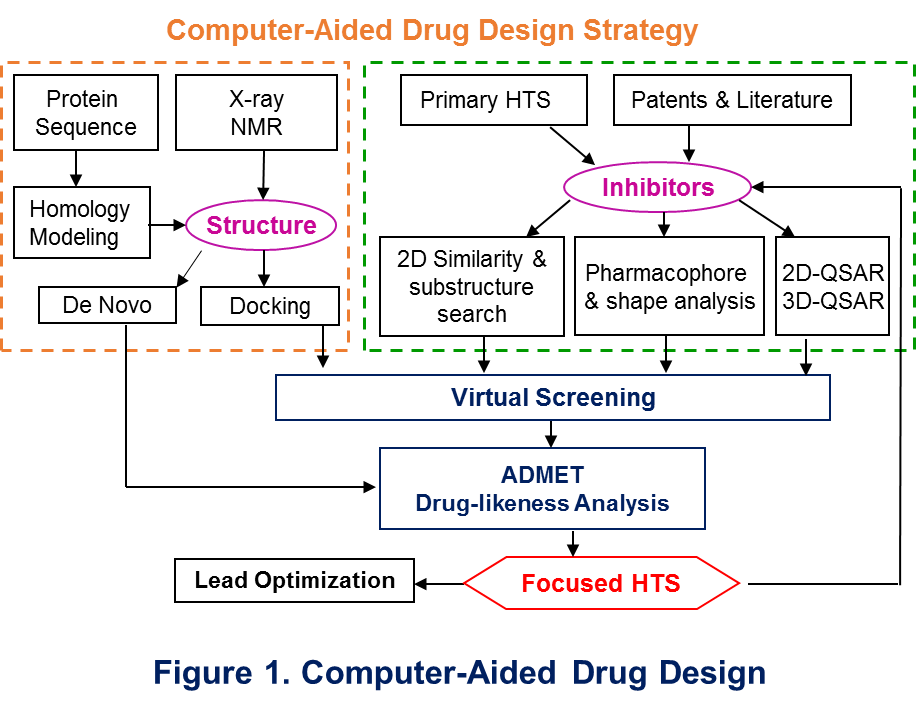Computer-aided drug design is an indispensable process in modern drug discovery. The CADD methods can be roughly classified into two categories based on whether biologic targets are used in the methods or not. In most cases, a drug is an organic small molecule that activates or inhibits the function of a biomolecule (such as a protein), which in turn results in a therapeutic benefit to the patients. In the most basic sense, drug design involves the design of small molecules that are complementary in shape and charge to the biomolecular target with which they interact and therefore will bind to it.
A drug design method that relies on the knowledge of the three-dimensional structure of the biomolecular target is known as structure-based drug design, such as molecular docking. While a method need no information on the biomolecular target at all belongs to the ligand-based drug design, such as pharmacophore modeling. In ligand-based drug design, the ligands are assumed to bind to the biomolecular target with the same or similar mechanism.
The basic rational drug design procedure is summarized in the following figure:
